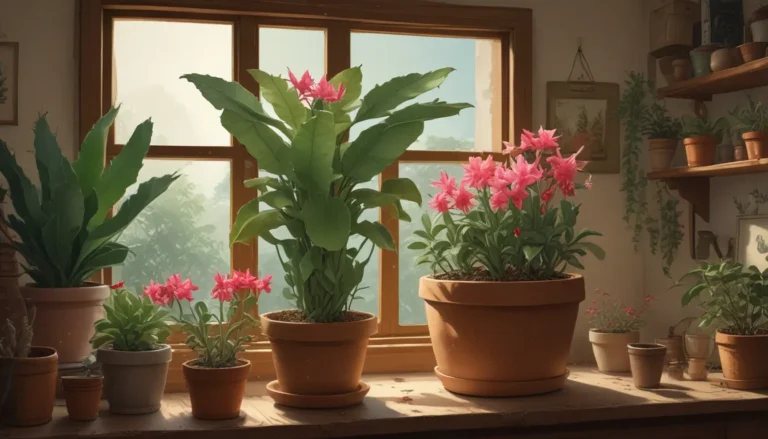A Comprehensive Guide to Growing and Caring for Lowbush Blueberries

One of the great joys of summer is indulging in the sweet delight of lowbush blueberries. These delicacies, also known as wild blueberries, are not only delicious but also hardy plants that can thrive in different climates. Whether you’re a seasoned gardener or just starting out, cultivating lowbush blueberries in your own garden can be a rewarding experience.
In this article, we’ll cover everything you need to know about growing and caring for lowbush blueberries, from cultivation and history to propagation, planting, maintenance, and harvesting. So, grab your gardening gloves and let’s dive in!
Cultivation and History of Lowbush Blueberries
Lowbush blueberries, scientifically known as Vaccinium angustifolium and V. myrtilloides, are native to the northeast United States and eastern and central Canada. These plants have a rich history of being used by Native Americans for both food and medicinal purposes. Over the years, they have also become a beloved commercial crop, thanks to their popularity in various food products.
Lowbush blueberries are well-suited for cultivation in USDA Hardiness Zones 2 to 8, making them ideal for cold and harsh winter climates. They thrive in acidic, well-draining soil with a pH of 4.0 to 4.8. By understanding their historical significance and environmental requirements, you can create an optimal growing environment for these delightful berries.
Propagating Lowbush Blueberries
Propagation is a key aspect of growing lowbush blueberries. Whether you choose to propagate from stem cuttings, rhizome segments, transplants, sod, or seeds, it’s essential to follow the right methods and timing for successful growth. Here are some tips for propagating lowbush blueberries:
- From Stem Cuttings: Select healthy stems and plant them in a container with a sand and peat mix.
- Rhizome Segments: Cut segments from existing shrubs and plant them in a flat with sand and peat.
- From Transplants: Purchase nursery starts as plugs or seedlings for easy planting.
- From Sod: Consider using lowbush blueberry sod for instant ground cover.
- From Seeds: Patience is key when growing from seeds, as it can take up to four years for plants to flower.
By choosing the right propagation method and providing the necessary care, you can establish a thriving lowbush blueberry garden in your backyard.
Planting and Growing Lowbush Blueberries
Finding the perfect location and creating the ideal growing conditions are essential for the successful cultivation of lowbush blueberries. These plants prefer full sun to part shade and thrive in organically rich, acidic soil. By mulching, watering, and feeding your plants regularly, you can ensure healthy growth and abundant yields.
Growing Tips for Lowbush Blueberries:
- Plant in acidic soil with a pH of 4.0 to 4.8.
- Mulch with wood chips, pine needles, or pine bark to regulate moisture.
- Provide one to two inches of water per week, especially during the establishment phase.
- Wait at least a year before harvesting berries to allow the plants to develop strong roots.
By following these growing tips and providing the necessary care, you can enjoy a bountiful harvest of delicious lowbush blueberries in your own backyard.
Pruning, Maintenance, and Harvesting
Pruning and maintenance are essential tasks to ensure healthy berry production in lowbush blueberries. By removing older branches, pruning after harvest, and practicing proper care techniques, you can promote vigorous plant growth and maximize fruit yields.
After a year or two of planting, you can start harvesting the berries in mid to late summer, once they are ripe. It’s important to wait until the berries turn a deep blue and appear plump before picking them. By following these guidelines, you can enjoy the fruits of your labor and savor the delicious taste of fresh lowbush blueberries.
Cultivars and Managing Pests and Disease
Selecting the right cultivars and managing pests and diseases are essential aspects of lowbush blueberry cultivation. By choosing varieties like Blomidon, Brunswick, and Burgundy, you can enjoy unique flavors and robust growth in your garden.
Lowbush blueberries are vulnerable to various pests and diseases, including herbivores, insects, and fungal infections. By taking preventive measures, such as using cages or netting to protect plants from wildlife and applying natural remedies for pests and diseases, you can safeguard your crop and ensure healthy plant growth.
Preserving, Recipes, and Cooking Ideas
Preserving the abundance of lowbush blueberries is a delightful way to enjoy them throughout the year. Whether you dry, can, or make jams and vinegar infusions, there are numerous creative ways to savor the taste of these delicious berries. By incorporating blueberries into recipes for pancakes, syrups, salads, smoothies, and desserts, you can explore new culinary possibilities and indulge in the vibrant flavors of nature.
Conclusion
Growing lowbush blueberries is a rewarding experience that allows you to connect with nature and enjoy the fruits of your labor. By following the tips and guidelines outlined in this article, you can cultivate a thriving blueberry garden in your own backyard. From propagation and planting to harvesting and preserving, lowbush blueberries offer a wealth of culinary delights and gardening pleasures. So, roll up your sleeves, grab your gardening tools, and get ready to grow your very own patch of sweet and savory lowbush blueberries. Happy gardening!





